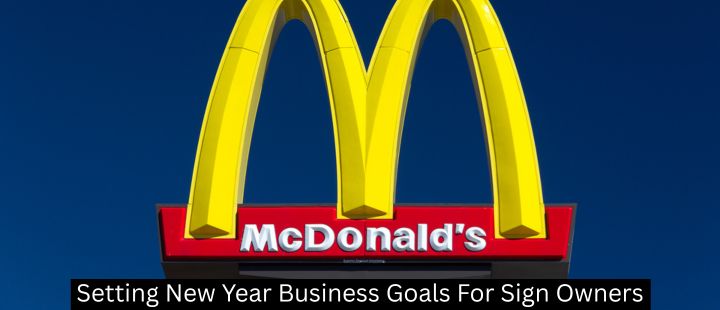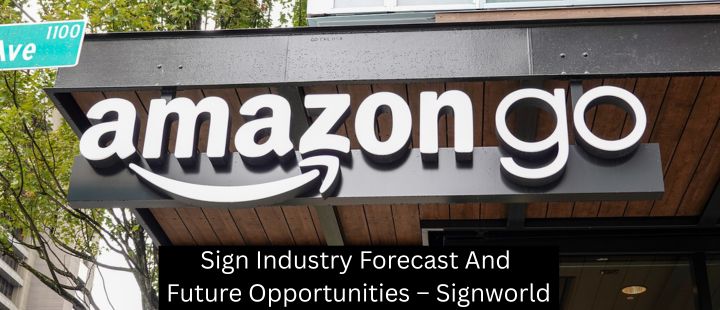Today’s post outlines 5 rapid-fire signage errors that have brought small business advertising campaigns to ruin! Read on to learn some best (and worst) practices to inform your next sign design.
#1 – Undersized Signage
Have you ever heard that “less is more”?
This old adage gets bandied about the business world all the time, used for cautioning restraint and efficiency in everything from marketing to employee management; it’s even used in our industry to keep business owners out of trouble with busy sign designs. However, like all old sayings, it doesn’t apply to every situation.
When it comes to choosing your signs physical dimensions, we recommend a “more is more”’ approach. Keep in mind that passersby will only have a matter of milliseconds to spot your sign. If your goal is to make people completely overlook your signage, then build your sign as small as possible; but if you want to make an impression and get your message across to as many prospects as possible, then you’ve got to go big. Large signs naturally draw attention to themselves, and give you more room for big fonts that will be legible at a distance.
Of course, bigger is not always better. There is a point of diminishing returns where your sign’s size makes it more of a novelty than a serious advertisement, so don’t go blowing your budget without rhyme or reason.
As a general rule, we recommend making your sign lettering 1 inch tall for every meter or yard of distance the sign will be viewed from. Measure out the distance from which your target audience will be seeing your sign, then figure out what size will be required based on that.
If you have any doubt about optimal sign sizes, book a consultation with a Signworld business near you.
#2 – Repellant Readability
A common mistake we see with business signage is overemphasizing visual elements without paying enough attention to the font and content itself. While a nice graphic or picture will go a long way towards drawing eyes, high-quality, readable content always matters most.
Write your content in a way that compels (rather than repels) your audience. That means writing in language that’s appropriate for your target audience, and taking the time to complete multiple, ruthless editorial passes to trim away any fat.
Remember: most signs have 2-3 “operative words,” such as the store address or sale details. Any words you add to the copy should enhance their impact, rather than cluttering up the sign space and making your message harder to decipher.
Additionally, you’ll want to choose a compelling font, which our sign experts can assist you with. At the very least, steer clear of Dingbat and Comic Sans!
#3 – Poor Palettes
Color combinations are crucial. High-contrast combinations, such as a black background with yellow lettering, are sure to be noticed. When in doubt, look to the industry leaders – there’s a reason why big-brands don’t use green text on blue backgrounds, yellow text on white, or red on brown!
#4 – Missed Branding Opportunities
Adding a logo or graphic is often all it takes to keep your branding on-point. These serve as focal points for your signage, and work as mental “hacks” to capture the attention of customers who recognize your brand image.
#5 – Illegal Signage
One of the quickest roads to failure is to mount your signage without any idea of local signage laws and ordinances. In addition to a hefty fine, you’ll be forced to relocate the sign, so best to consult with a sign specialist before starting your installation!
You can learn more signage best practices and find further expert advice at http://www.signworld.org




